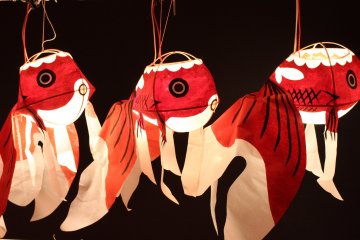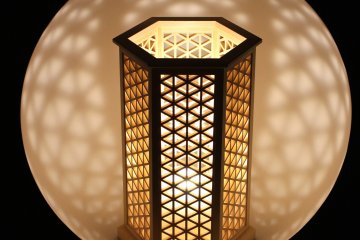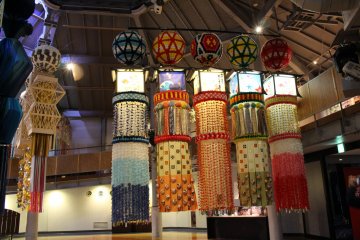There is a huge number of different museums in Japan. One can hardly be surprised at history, science and art museums but there are some that really do impress. Here is just a small sample.
1. Namahage Museum, Akita Prefecture
In 2018, the Namahage Oga event was included by UNESCO on the list of world cultural heritage. In this area of Akita Prefecture, a custom appeared long ago – on New Year's Eve, strange and scary looking creatures called namahage came to people's homes. Dressed in straw capes, with faces covered in fierce masks of bright colors, horns and fangs, they looked evil. In fact, the namahage were anything but and their appearance was considered a good sign with households treating them to a cup of warm sake.
In the Namahage Museum, you will see magnificent displays of costumes and masks that are absolutely unique in Japan. Visitors can also watch the ritual itself in a separate building or on video. Visitors can dress up in a namahage costume and take photos, and buy unique souvenirs in the museum store.
From Akita Station it's a 55-minute trip to Hadachi or Oga stations on the JR Oga Line. From there, take the Namahage Shuttle for a 15-minute ride to the museum.

2. Kobe Lampwork Glass Museum, Hyogo Prefecture
Lampwork is a special technique of creating beads and other products by melting glass in the flame of a gas burner. The Kobe Lampwork Glass Museum is the only one of its kind in the world and its collection includes about 2000 exhibits, including ancient and unique ones. The exhibition clearly shows the beauty of this art form, but that's not all – visitors can observe the process of creating products, try their hands in creating a piece as well as buy souvenirs.
Next to the Lampwork Museum lies the separate Kobe Lamp Museum. Another curious museum, this one exhibits the development of artificial lighting, including traditional Japanese lamps as well as Western and more modern designs.
The museums is an 8-minute walk from either JR Sannomiya or JR Motomachi stations.

3. Wa Rasse Nebuta House, Aomori Prefecture
This wonderful museum is dedicated to the famous Nebuta Matsuri Festival, which takes place in Aomori every year in early August. In the museum you can not only see magnificent bright displays, but also plunge into the atmosphere of the festival. The most notable element of the Nebuta Matsuri festival are the giant parade floats composed of different themes. Made out of metal frames and painted paper, these floats are amazing when lit, which is how they are displayed in the museum. In addition to the exhibition, visitors have the opportunity to see the process of creating figures, try their hand at taiko drumming, watch a short film about the festival and even dance a traditional dance.
The museum is easy access being right by JR Aomori Station.

4. Tsugaru-han Neputa Village, Aomori Prefecture
This museum in Hirosaki City exhibits Neputa Matsuri displays – another interesting festival with colorful floats and taiko performances. In the museum, in addition to the main display, performances of the traditional Japanese stringed instrument shamisen and demonstrations of local crafts are held daily. On the second floor visitors will find a restaurant serving local cuisine. The museum is located next to Hirosaki Castle making it a lovely combination of attractions.
The museum and castle are an 8-minute ride from Hiroasaki Station on the JR Ou Main Line.

5. TeamLab Borderless Virtual Art Museum, Tokyo
Digital images and large-scale projections are far from new, but this museum is still amazing as it completely changes our ideas about space and boundaries. It's no wonder the word 'borderless' is part of its name – it really is limitless. Projections and mirrors fill the space, surrounding the viewer, flowing from one to another, building and destroy forms. The museum makes a real impression of everyone who visits.
A few minutes walk from Aomi Station on Yurikamome Monorail Line.

6. Japanese Sword Museum, Tokyo
The Japanese sword is one of the iconic symbols of Japan and its beauty can be appreciated by visiting the Japanese Sword Museum in Tokyo's Ryogoku district. The most common sword is the katana and is made as follows: pieces of steel of a special grade are placed in an ash and clay solution for cleaning from slags. A softer metal is then added to the steel to give it a viscosity that protects the blade from breakage. Then, during the hardening process, a hamon is formed – a wavy sharpening line. In general, the katana and its manufacture is a complex process, and each of the dozens of details involved has its own name: monouchi - the impact surface, tsuka - the handle, nakago - the base of the cutting part, and so on.
A 6-minute walk from Ryogoku Station on the JR Sobu Line or the Toei Subway Oedo Line.

7. Tanabatakan Museum, Miyagi Prefecture
Unlike the rest of the country, the Tanabata Festival in Sendai is held not in early July but in early August. The Sendai Festival is famous for the rich decorations that are hung along the main shopping street of Hirose-dori. You can see these huge and magnificent hanging ornaments not only during the festival, but also all year round-in the free Tanabatakan Museum.
A 20-minute bus ride from JR Sendai Station.

8. Tottori Sand Museum, Tottori Prefecture
Creations of sand, which are real works of art, are found in different countries throughout the world. Although Japan is not associated with sand dunes, they are there in large numbers – in the city of Tottori, located in the southwest of Honshu Island. Tottori has a unique Sand Museum for Japan, or rather, sand sculptures. Grandiose and carefully designed, these sand creations are truly impressive. The museum is located near the Tottori sand dunes.
10-minute ten minute drive from Tottori's Conan Airport.
9. The World of Dinosaurs Museum, Fukui Prefecture
The World of Dinosaurs Museum demonstrates everything you need to know about dinosaurs. The exhibitions are made up of different sections: Dinosaur Biology, Dinosaurs of Japan & Asia and Real-size Dinosaur Diorama, consisting of a Jurassic forest, animated dinosaurs and a computer graphic film.
The Hall of Dinosaurs exhibits 44 life-sized skeletons of these extinct beasts. Ten of them contain a significant number of original fossilized bones, and the skeleton of the camarasaurus specimen contains more than 90% of the creature's original bones.
A 10-minute taxi or community bus from Katsuyama Station on the Katsuyama Eiheiji Line.














